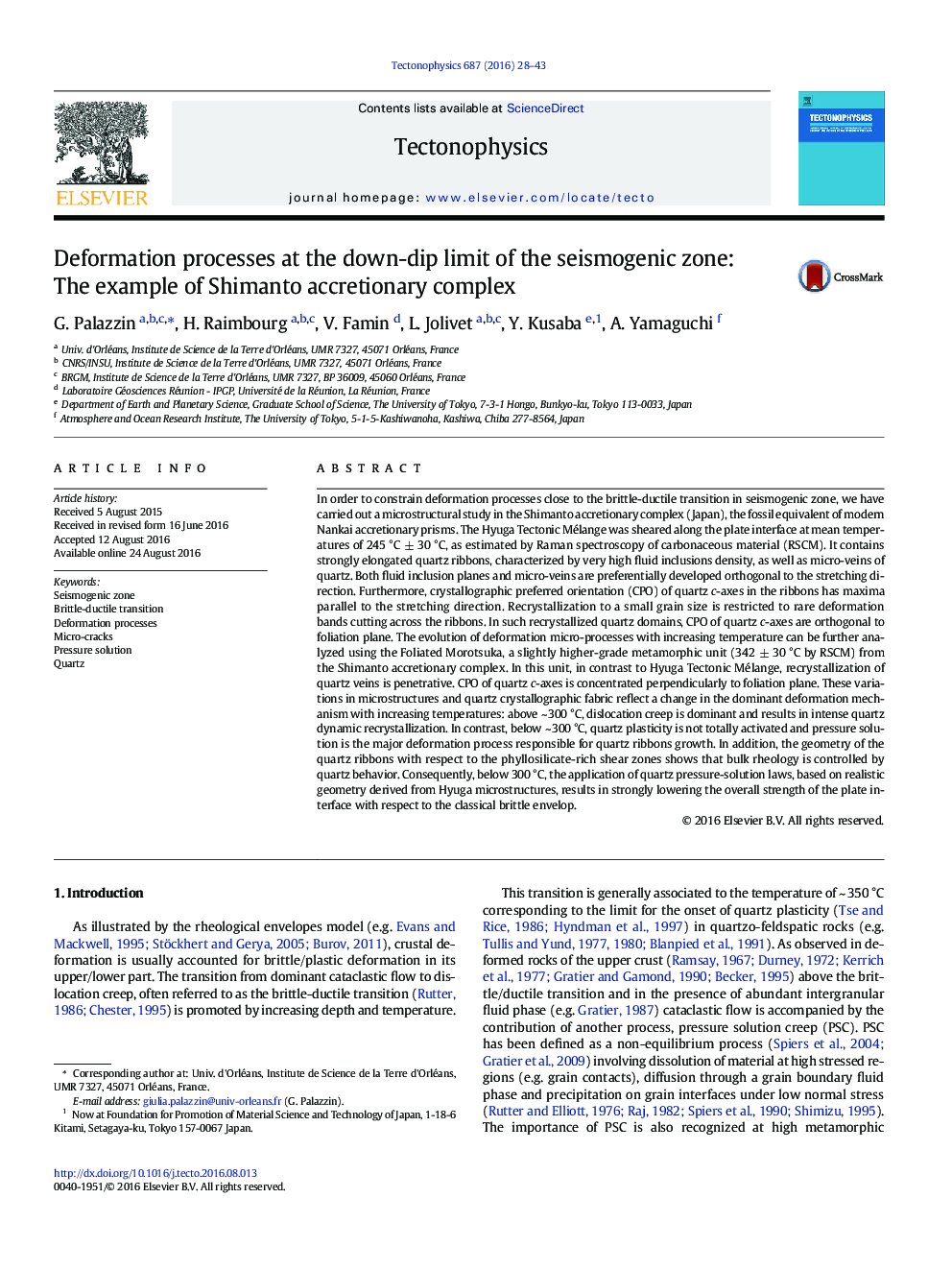| کد مقاله | کد نشریه | سال انتشار | مقاله انگلیسی | نسخه تمام متن |
|---|---|---|---|---|
| 4691204 | 1636711 | 2016 | 16 صفحه PDF | دانلود رایگان |
• Foliation planes (dissolution sites) and ribbons (precipitation sites) are associated to pressure solution mechanism.
• Shear stress values estimated for pressure solution creep are strongly lower than the classical Byerlee's law.
• The brittle-ductile transition in subduction zones needs to be accounted of the effect of pressure-solution improved by large water amount.
• Below ~ 300 °C pressure solution creep is the dominant deformation process for quartz.
• Bulk rheology in the Hyuga Tectonic Mélange is controlled by quartz.
In order to constrain deformation processes close to the brittle-ductile transition in seismogenic zone, we have carried out a microstructural study in the Shimanto accretionary complex (Japan), the fossil equivalent of modern Nankai accretionary prisms. The Hyuga Tectonic Mélange was sheared along the plate interface at mean temperatures of 245 °C ± 30 °C, as estimated by Raman spectroscopy of carbonaceous material (RSCM). It contains strongly elongated quartz ribbons, characterized by very high fluid inclusions density, as well as micro-veins of quartz. Both fluid inclusion planes and micro-veins are preferentially developed orthogonal to the stretching direction. Furthermore, crystallographic preferred orientation (CPO) of quartz c-axes in the ribbons has maxima parallel to the stretching direction. Recrystallization to a small grain size is restricted to rare deformation bands cutting across the ribbons. In such recrystallized quartz domains, CPO of quartz c-axes are orthogonal to foliation plane. The evolution of deformation micro-processes with increasing temperature can be further analyzed using the Foliated Morotsuka, a slightly higher-grade metamorphic unit (342 ± 30 °C by RSCM) from the Shimanto accretionary complex. In this unit, in contrast to Hyuga Tectonic Mélange, recrystallization of quartz veins is penetrative. CPO of quartz c-axes is concentrated perpendicularly to foliation plane. These variations in microstructures and quartz crystallographic fabric reflect a change in the dominant deformation mechanism with increasing temperatures: above ~ 300 °C, dislocation creep is dominant and results in intense quartz dynamic recrystallization. In contrast, below ~ 300 °C, quartz plasticity is not totally activated and pressure solution is the major deformation process responsible for quartz ribbons growth. In addition, the geometry of the quartz ribbons with respect to the phyllosilicate-rich shear zones shows that bulk rheology is controlled by quartz behavior. Consequently, below 300 °C, the application of quartz pressure-solution laws, based on realistic geometry derived from Hyuga microstructures, results in strongly lowering the overall strength of the plate interface with respect to the classical brittle envelop.
Journal: Tectonophysics - Volume 687, 26 September 2016, Pages 28–43
